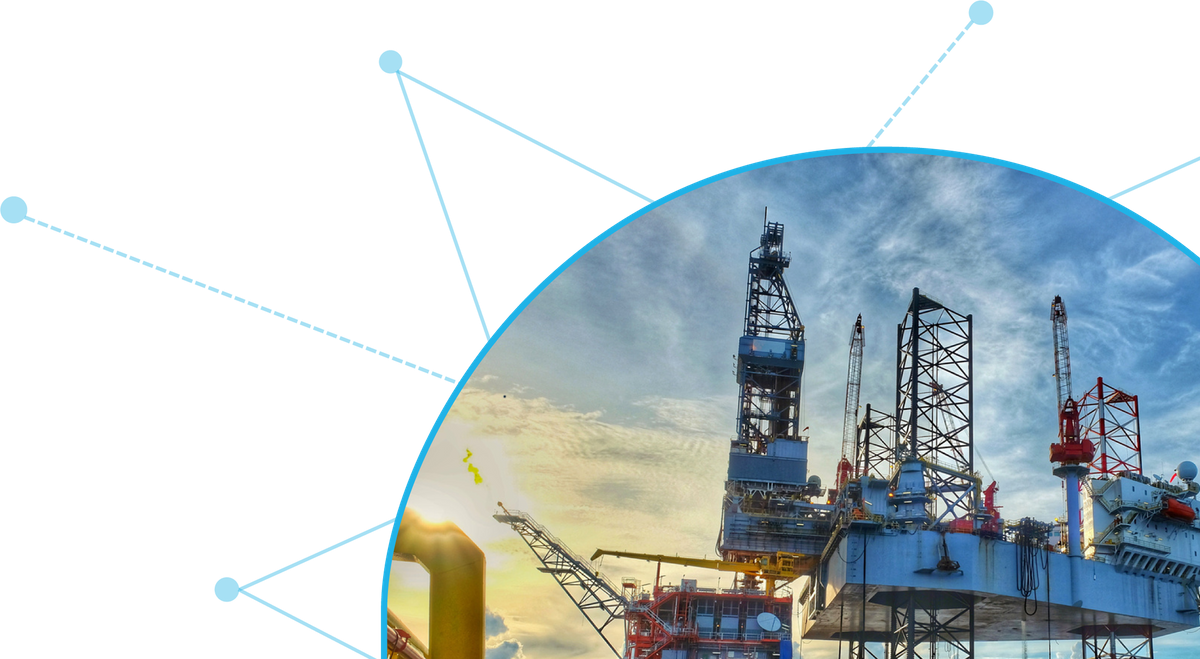Driving Digital Transformation in the Offshore Engineering Sector with Hybrid Connectivity Solutions
The offshore engineering sector is at the heart of global infrastructure, supporting industries such as oil and gas, renewable energy, and maritime operations. These complex remote environments have traditionally relied on manual processes and isolated communication systems. However, the advent of digital technologies is revolutionising the sector, enabling significant improvements in efficiency, safety, and cost-effectiveness.
This transformation hinges on robust connectivity solutions, as offshore environments often pose significant challenges for communication infrastructure. The integration of hybrid connectivity solutions – combining satellite, cellular, and traditional networks – offers unprecedented opportunities for offshore engineers to fully embrace digitalisation. AST Networks, a global leader in satellite and hybrid communication solutions, is uniquely positioned to drive this shift, ensuring offshore engineers have the critical connectivity needed to unlock the full potential of data transformation.
Digital Transformation in Offshore Engineering
Digital Transformation refers to the integration of digital technologies into all areas of business, fundamentally changing how companies operate and deliver value to their customers. In the offshore engineering sector, this process is crucial for addressing challenges such as:
-
Remote Operations
Offshore platforms and vessels operate in remote, often harsh environments, where communication and data exchange are critical for real-time decision-making -
Data collection and analysis
Modern engineering projects generate vast amounts of data from sensors, drones, and IoT devices, requiring reliable connectivity for transmission and analysis. -
Operational efficiency
Digital tools, such as predictive maintenance and automation, can significantly improve operational efficiency and reduce downtime.
The Role of Hybrid Connectivity in Offshore Digitalisation
Offshore environments present unique connectivity challenges due to their remote locations, unpredictable weather, and harsh conditions. Traditional connectivity solutions, such as satellite communications, have played a crucial role in bridging the gap, but the demand for higher bandwidth, lower latency, and more resilient connections has driven the need for hybrid connectivity solutions.

Hybrid Connectivity Defined
Hybrid connectivity refers to the use of multiple communication networks, such as satellite, cellular, and terrestrial networks, providing seamless, reliable, and high-speed connections. By combining these technologies, offshore engineers can ensure constant connectivity, even in the most remote or challenging conditions. Hybrid solutions offer:
-
Redundancy and Resilience
Offshore operations cannot afford downtime. Hybrid networks provide a failover mechanism, ensuring that if one network (e.g., satellite) becomes unavailable due to weather conditions or technical issues, another (e.g., cellular or terrestrial) can take over seamlessly. -
Bandwidth Flexibility
As offshore operations adopt more digital tools - such as IoT, AI-driven data analysis, and cloud-based systems - the demand for higher bandwidth grows. Hybrid networks can dynamically switch between different connection types to optimise bandwidth availability based on the task at hand. -
Cost Efficiency
Hybrid solutions can reduce communication costs by allowing engineers to use more cost-effective networks, like terrestrial or cellular, when available, and only rely on satellite when absolutely necessary. -
Applications of Hybrid Connectivity in Offshore Engineering
The potential application of hybrid connectivity in the offshore sector are vast. AST Networks provides solutions tailored to specific operational requirements, allowing engineers to fully leverage digital tools and practices in their day-to-day work.
Real-Time Data Transmission and Monitoring
Offshore platforms are equipped with thousands of sensors monitoring everything from structural integrity to environmental conditions. These sensors generate massive amounts of data, which must be transmitted in real-time, regardless of weather or network conditions.
This is particularly important for predictive maintenance, where early detection of equipment failure can prevent costly downtime. For example, by integrating IoT sensors with hybrid networks, engineers can monitor the health of critical equipment remotely and receive alerts if anomalies are detected. This allows for timely interventions and reduces the risk of unplanned outages.
Enhanced Collaboration and Remote Expertise
In offshore engineering, collaboration between onshore and offshore teams is vital. However, geographic separation has often been a barrier to real-time communication. With hybrid connectivity, offshore teams can engage in high-quality video conferencing, share data instantly, and access cloud-based applications.
AST Networks’ solutions make it possible for engineers to connect to experts and supervisors located onshore, even during challenging sea conditions. This not only enhances decision-making, but also allows for real-time problem-solving, which can be critical in high-stakes environments such as oil rigs or wind farms.
Autonomous and Remote Operations
As offshore operations become more automated, the need for continuous, reliable connectivity becomes even more essential. Unmanned platforms, autonomous underwater vehicles (AUVs), and drones are increasingly used for monitoring, inspection, and maintenance tasks. These autonomous systems rely on constant data streams to operate effectively.
With hybrid connectivity, engineers can monitor and control these systems from remote locations, ensuring operational continuity, even when direct human oversight is limited. By leveraging multiple connectivity solutions, AST Networks ensures that autonomous systems remain online and fully functional, even if one communication method should fail.
Improving Safety and Compliance
Safety is paramount in the offshore engineering sector, and hybrid connectivity plays a critical role in enabling real-time monitoring of safety systems, ensuring that vital alarms and alerts are communicated instantly to the relevant personnel. This is particularly important for emergency response scenarios, where rapid communication can be the difference between a controlled situation and disaster.
Moreover, regulatory compliance often requires the continuous transmission of data, such as environmental impact reports or safety audits, to government authorities or corporate headquarters. Hybrid connectivity ensures this data is reliably delivered, supporting compliance efforts and reducing the risk of penalties.
Challenges of Hybrid Connectivity and How AST Networks Overcomes Them
While hybrid connectivity offers numerous advantages, it also presents challenges. These include the need to manage multiple networks seamlessly, ensuring network security, and optimising network performance in varying conditions. AST Networks has developed a suite of solutions designed to address these challenges head-on.
-
Intelligent Network Management
AST Networks’ advanced management systems automatically switch between networks based on real-time conditions, ensuring that offshore teams always have access to the best available connection. -
Network Security
Offshore engineering environments are increasingly becoming targets for cyberattacks. AST Networks provides robust encryption and cybersecurity solutions to ensure that all communications are protected, regardless of the network in use. -
Customised Solutions
Every offshore environment is unique, with specific needs for bandwidth, latency, and uptime. AST Networks works closely with clients to design custom hybrid solutions that meet the precise needs of each operation, ensuring optimal performance.
Conclusion
The offshore engineering sector is on the cusp of a digital revolution, with hybrid connectivity playing a pivotal role in enabling this transformation. From real-time data transmission and remote collaboration to autonomous operations and enhanced safety, hybrid networks provide the backbone for offshore engineers to fully embrace digitalisation.
AST Networks, with its industry-leading expertise in hybrid connectivity, is committed to supporting offshore engineering companies as they navigate this digital transformation journey. By ensuring robust, reliable, and flexible connectivity solutions, AST Networks is empowering the sector to unlock new levels of efficiency, safety, and innovation.
AST Networks Head Office
Satellite House, Bressemer Way Harfreys Industrial Estate
Great Yarmouth, Norfolk NR31 0LX, United Kingdom
+44(0)1493 440 011

